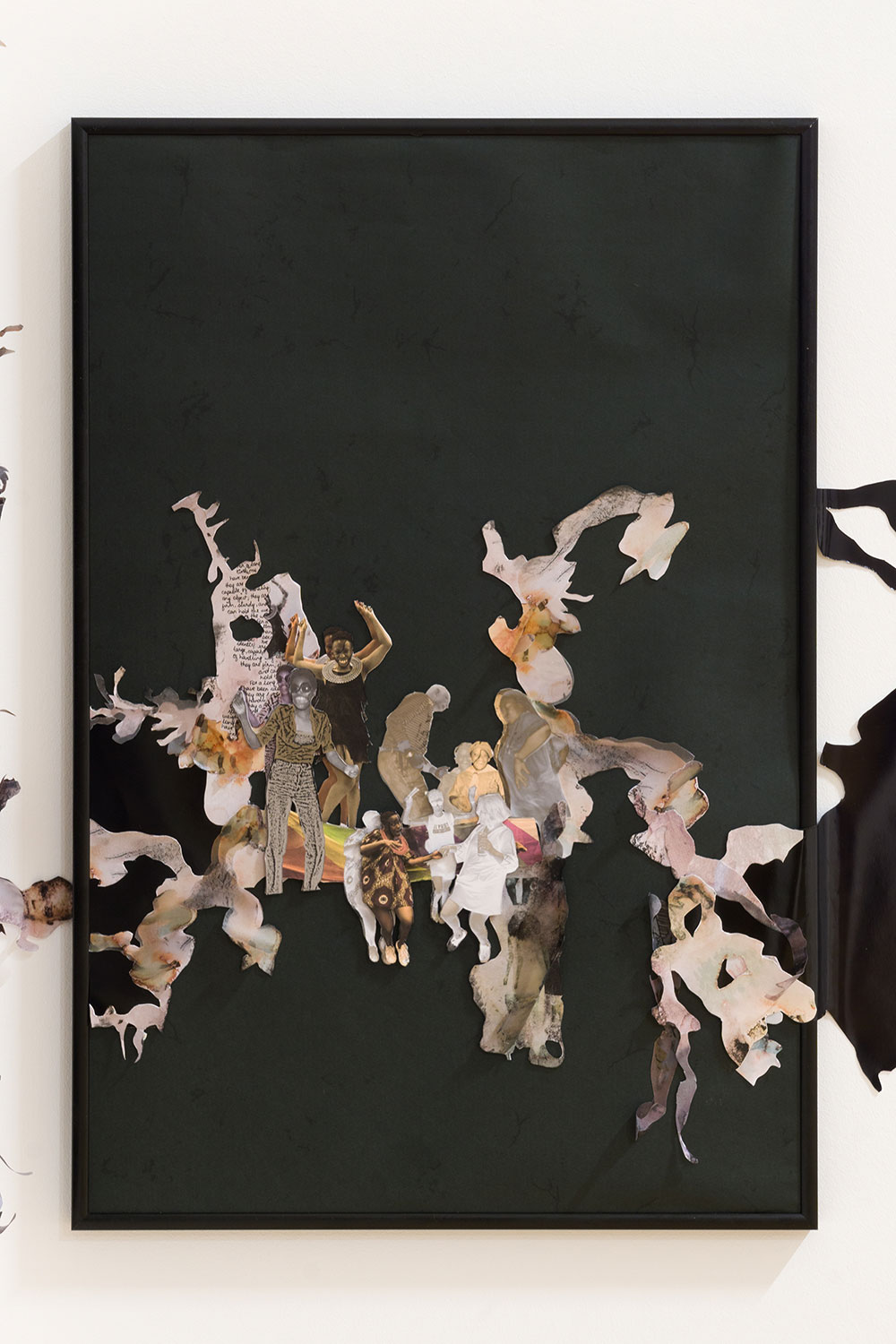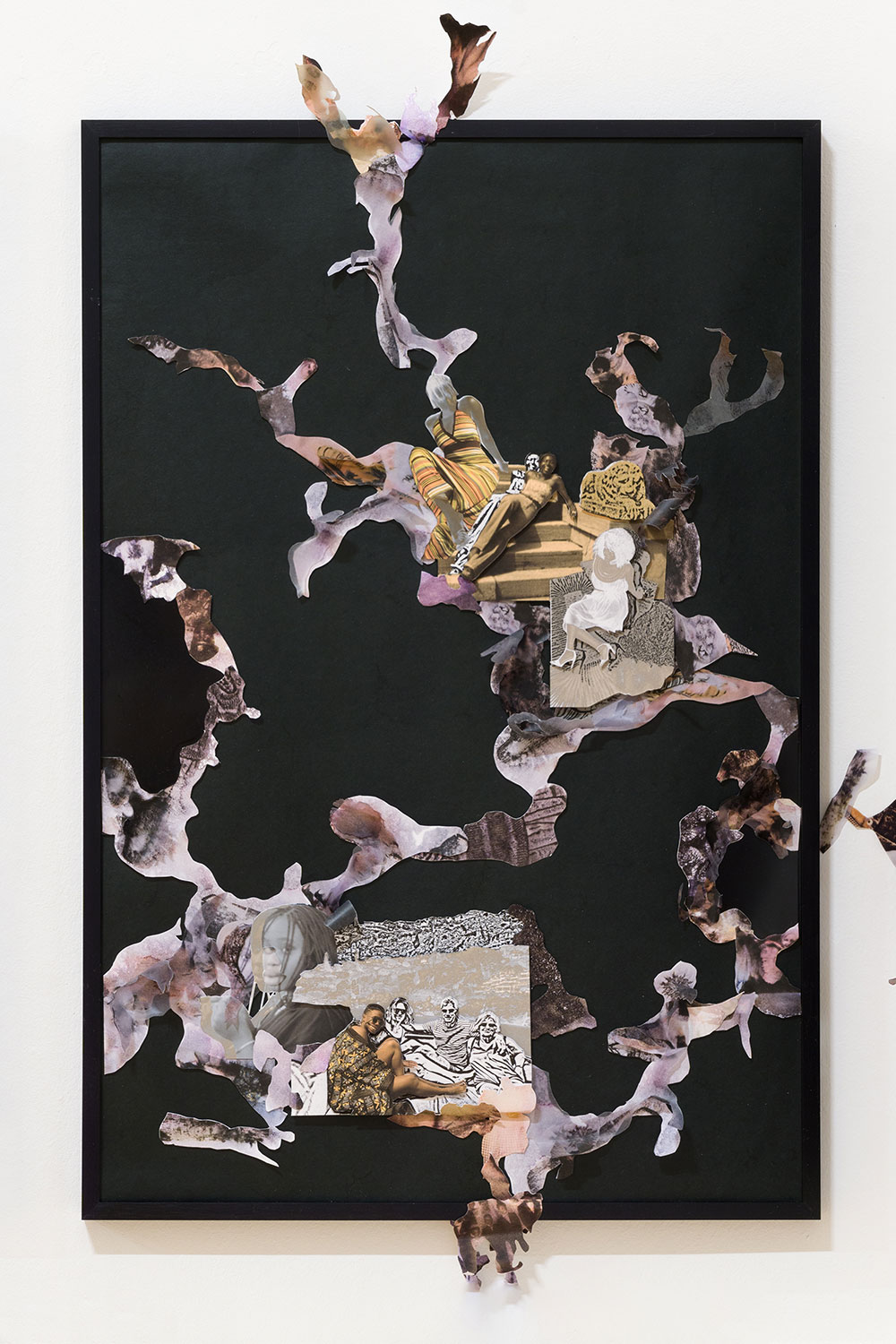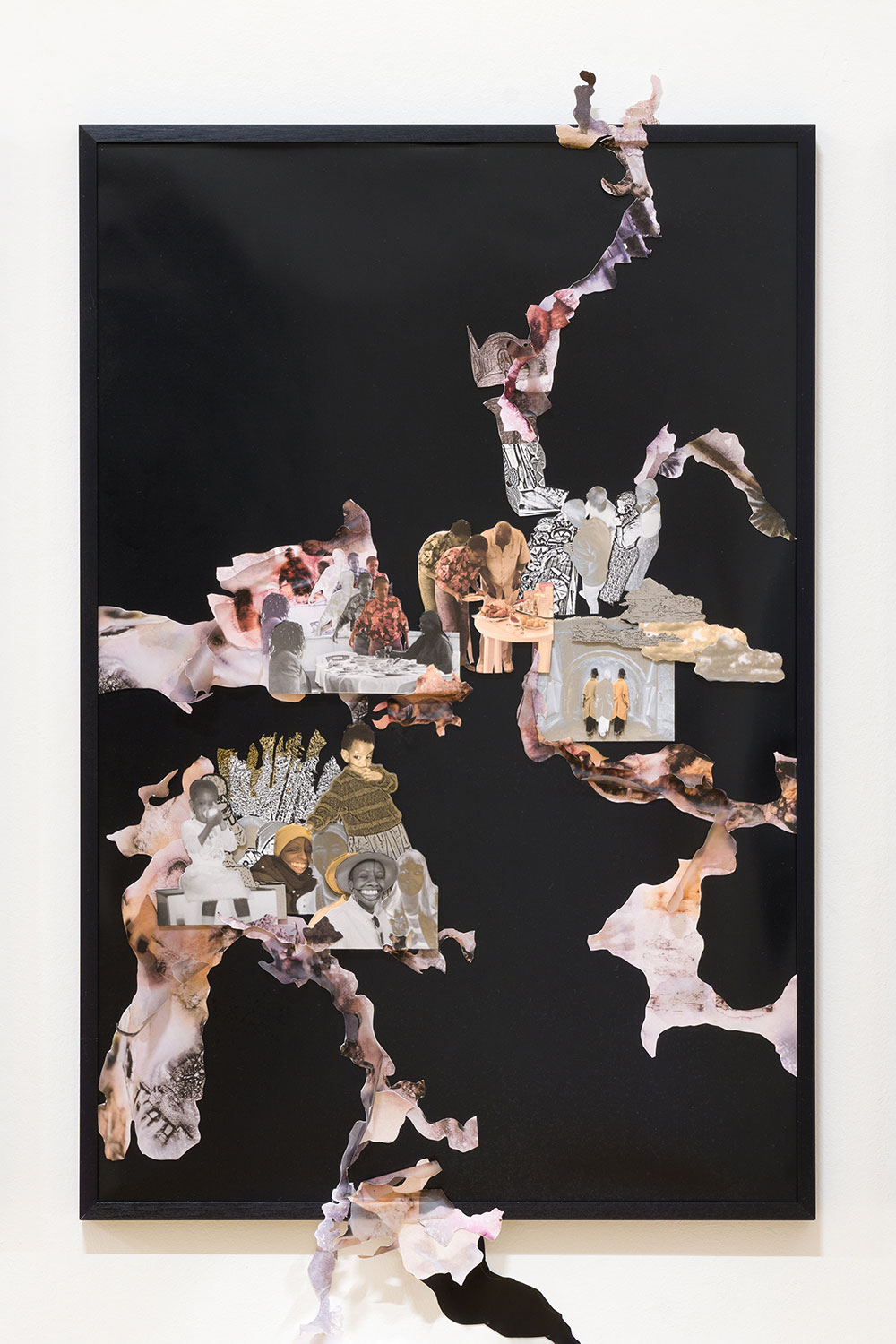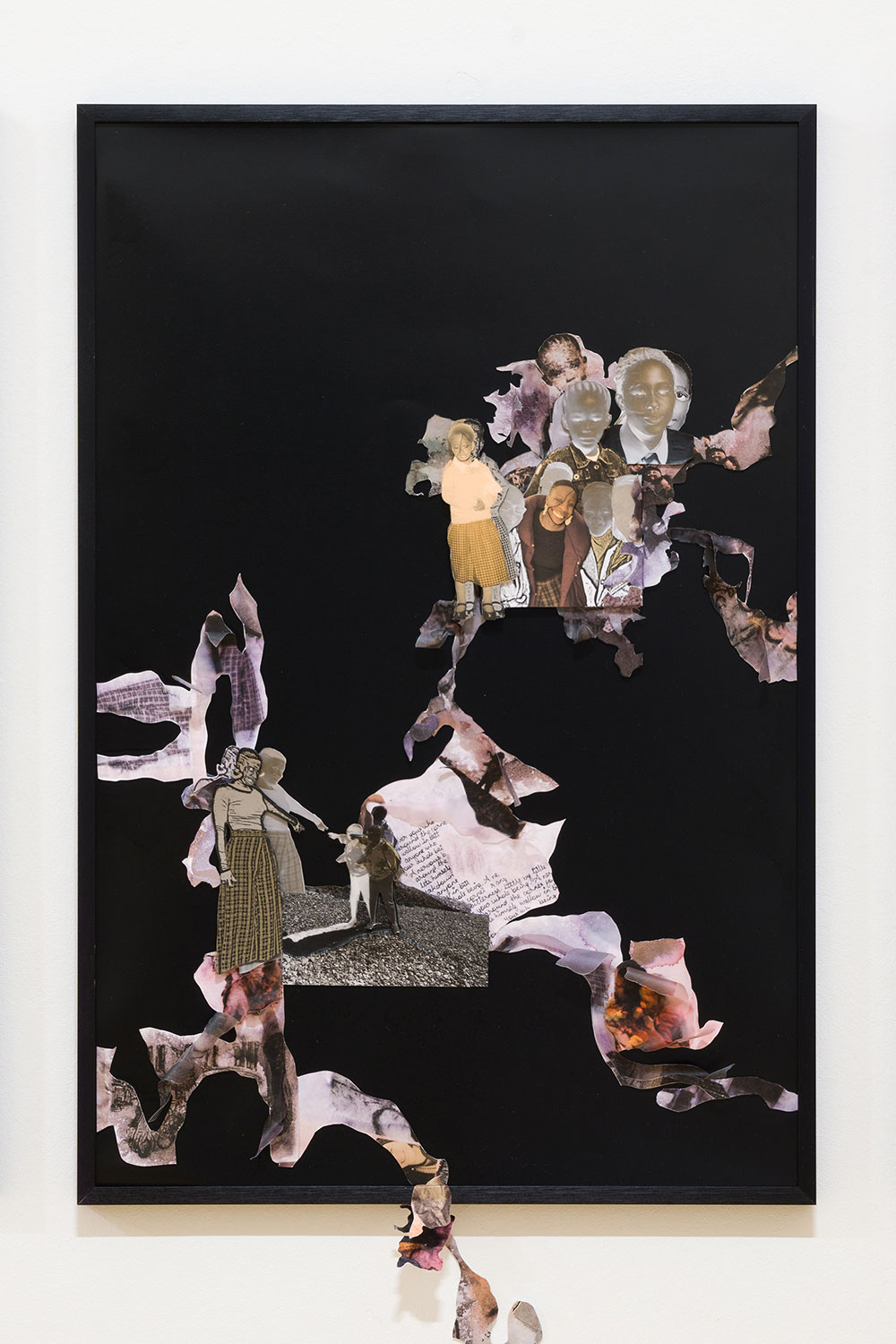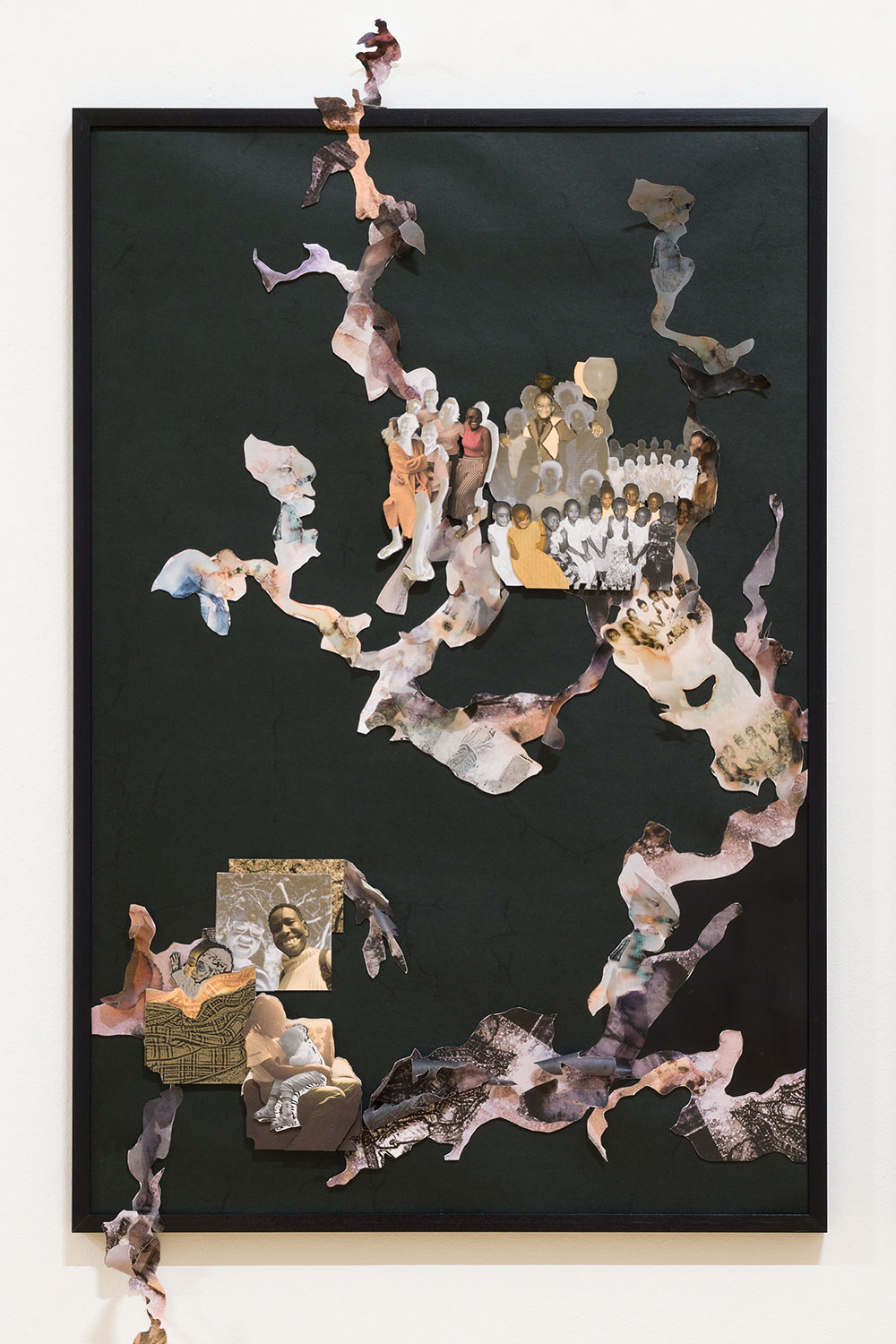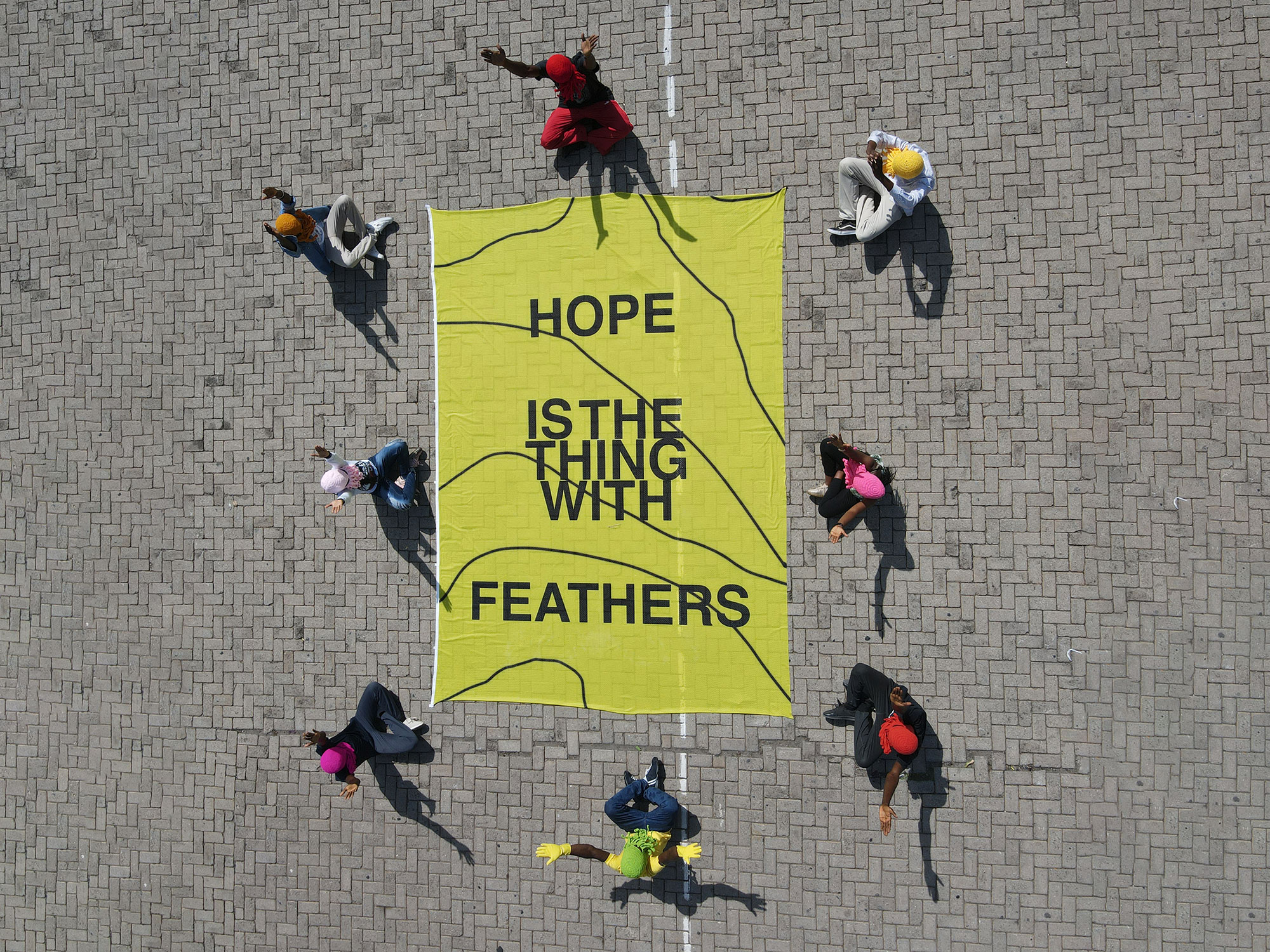Jordan Rita Seruya Awori is a Kenyan interdisciplinary artist based in Frankfurt, Germany. Working across collage, installation, video, sound, and performance, she explores and questions the layered complexities of human experience through processes that shift between intuition and structure, research and ritual. Often using materials such as water, hair, thread, soil, and paper — elements she believes hold stories, absorb touch, and resist control — she creates works that balance control and chaos, the personal and collective, stillness and movement. While her diasporic perspective informs how she sees, it does not confine her stories; instead, she builds ambiguous, layered spaces where multiple truths can coexist.
A graduate in Arts and Design from the University of Nairobi, Awori’s background in interior design shapes her approach to space, making the environment an active part of her work. Her works have recently been shown at Museum Giersch der Goethe Universität and the Deutsches Filminstitut & Filmmuseum Frankfurt, and her practice has been written about in Frankfurter Allgemeine Zeitung, Kunstforum International, and Berlin Art Link.
Artist Statement
"My practice is rooted in layering as a way of thinking, remembering, and being in the world. I’m drawn to how things overlap, blur, and refuse to stay separate: the personal and the political, the fragile and the grounded, the remembered and the forgotten. I move between collage, installation, video, sound, and performance, following intuition more than certainty. Water is a recurring collaborator; it stains, distorts, and transforms the surface, teaching me to surrender control. As someone who tends to hold on tightly, I find this both difficult and freeing. The work often asks me to let go before I am ready, to trust that something meaningful can emerge from what I cannot control. That tension, between perfection and release, has become central to how I work and live.
Much of my imagery begins from fragments: family archives, textures from home, gestures of care. It also comes from moments of frustration, from trying to make sense of a world that often feels illogical or absurd. I’m interested in how the smallest details, a strand of hair, a cracked wall, a faded print, can hold entire histories.
I want my works to resist stillness. Even when fixed on paper or screen, I’m drawn to the feeling that something is shifting, peeling, or growing beyond its edge. I often use three-dimensional layering, textured surfaces, and visual mobility to suggest that movement, as if the work is slowly escaping its own boundaries. This sense of motion reflects how I see the world: nothing ever fully contained, everything in the process of becoming. Space itself becomes a participant, shaping how each layer breathes and interacts.
Since moving from Nairobi to Frankfurt, my palette and rhythm have shifted. I’ve found a quiet in the muted tones of European winters, a different kind of warmth that lives in texture, patience, and slow transformation. My practice now leans toward the organic and the evolving, drawn to moments where things change form yet continue to carry traces of what they were.
I’m drawn to the in-between: between stillness and motion, beauty and awkwardness, knowing and unknowing. My work lives there, in the tension that holds everything together. I think of it as building an altar, slowly and intuitively. Each layer carries something: a sound, a scar, a root, a thought. Together, they form a space where viewers are not asked to understand, but simply to be with what rises, and in that space, to question what they see, feel, and have been taught to know."
